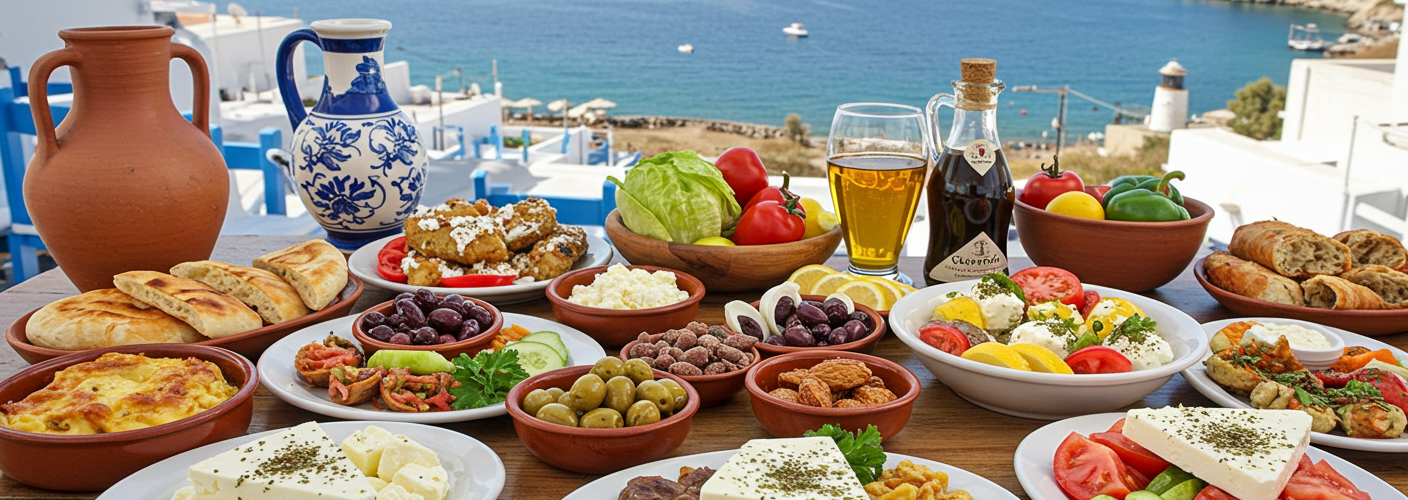Greek cuisine is a vibrant tapestry of flavors, colors, and aromas that reflects the country’s rich history and diverse culture. From the sun-soaked shores of the Aegean Sea to the lush hills of the mainland, every region in Greece offers a unique twist on traditional dishes. For food lovers, exploring Greece’s culinary landscape is an adventure that promises unforgettable tastes and experiences.
The Foundation of Greek Food: Fresh Ingredients
At the heart of Greek cooking is the emphasis on fresh, high-quality ingredients. The Mediterranean climate provides an abundance of fruits, vegetables, and herbs, which play a crucial role in everyday meals. Staples like tomatoes, olives, cucumbers, and eggplants are at the forefront of many dishes, delivering both flavor and nutrition. Olive oil, often referred to as “liquid gold,” is a cornerstone of Greek cuisine, used generously not only for cooking but also as a dressing for salads and dips.
Iconic Greek Dishes
No exploration of Greek food would be complete without mentioning a few iconic dishes that have become synonymous with the country’s culinary identity:
- Moussaka – This famous baked dish features layers of eggplant, minced meat, and a creamy béchamel sauce. Each region has its own variation, with some using potatoes or zucchini, making it a versatile and beloved option.
- Souvlaki – One of Greece’s most popular fast foods, souvlaki consists of skewered and grilled meat, typically served with pita bread and various sauces. Whether it’s pork, chicken, or lamb, this dish encapsulates the simplicity and flavor of Greek street food.
- Dolmades – These vine leaves stuffed with rice, pine nuts, and herbs are a classic appetizer. Often served with a squeeze of lemon juice, dolmades offer a delightful contrast of textures and flavors.
- Tzatziki – A refreshing yogurt-based dip, tzatziki is made with cucumbers, garlic, and dill. It complements many dishes, especially grilled meats, providing a cool and tangy balance.
- Baklava – This sweet pastry is a staple dessert made from layers of filo dough, nuts, and honey. Its rich flavors and crispy texture make baklava a beloved treat worldwide.
The Influence of Regional Specialties
Greek food is highly regionalized, with each area offering its own specialties based on local ingredients and traditions. In Crete, for example, the traditional diet is characterized by whole grains, vegetables, and goat cheese. Meanwhile, the islands are famous for their seafood dishes, prepared fresh from the surrounding waters.
The Social Aspect of Dining
In Greece, food is not just sustenance; it is a means of bringing people together. Meals are often communal, shared among family and friends, and centered around a table overflowing with dishes meant for sharing. This culture of hospitality is evident in the traditional Greek ‘feast’ where everyone participates, making dining a joyful and memorable experience.
Embracing Greek Cuisine
For those interested in exploring Greek cuisine, many local markets, restaurants, and cooking classes offer opportunities to dive deeper into the flavors of Greece. Whether you’re enjoying a meal in a bustling Taverna or trying your hand at making traditional dishes at home, the essence of Greek cooking—simple, honest, and hearty—will always shine through.
In essence, Greek food is about more than just what is on your plate; it’s about community, tradition, and the joy of sharing wonderful flavors with loved ones. Each bite invites you to experience the history and culture of this enchanting country, making it a must-try for every food enthusiast.




Add comment